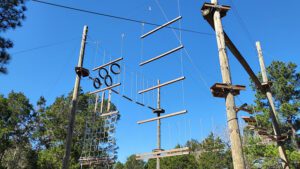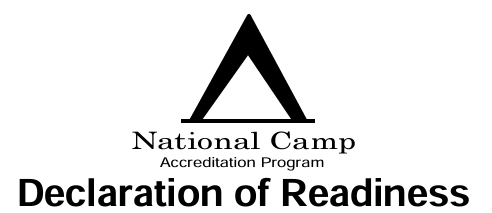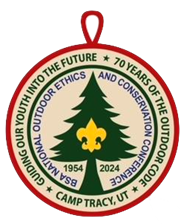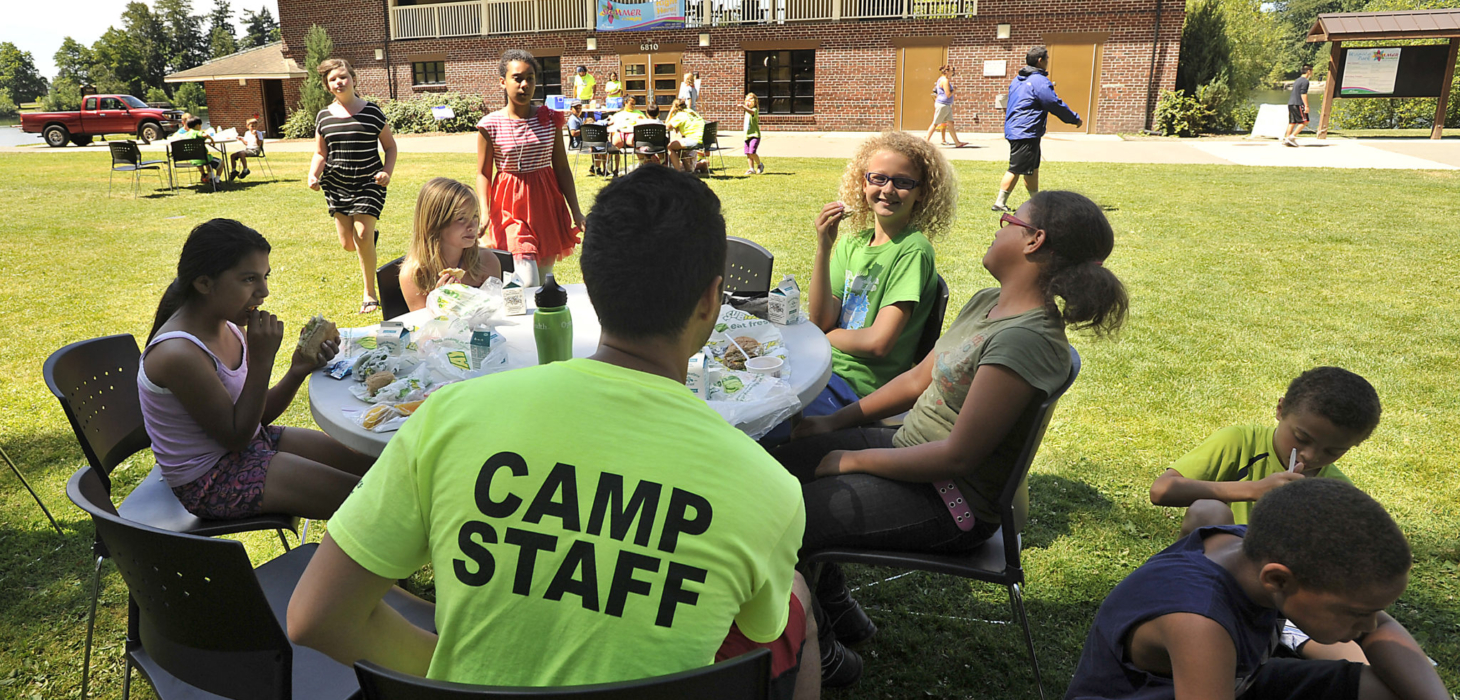2024 March-April Edition

COPE/Climbing
As we are getting ready for camp and going through your checklist for opening (NCAP RP-855), one of the items on your list is your annual COPE and climbing facilities ACCT inspection. Let’s review NCAP standard FA-715 and how it applies to your camp and let’s focus on what you need to DO to be ready for your season.
Before you operate your COPE and climbing area(s) they must be inspected by a “qualified person.” This person is defined in the NCAP standard FA-715 and the inspection must take place each year (within 12 months) of operation. As a reminder someone who is trained as an NCS COPE or Climbing director alone is not qualified to do this professional inspection.
Your council will need to schedule this inspection NOW if you have not already done so. A list of professional ACCT vendors is found at www.acctinfo.org/page/PVMList. Inspectors book quickly so its essential you schedule this inspection right away if you have not already done so.
So you get the inspection, now what?
Taking charge: the councils’ responsibility
Your council plays a central role in overseeing the safety of your climbing and COPE courses. When inspections reveal areas of concern, it falls upon the council to address these issues swiftly and effectively, prioritizing the safety of all involved. This includes developing a plan to address any issues from the inspection. The NCAP standard allows you 60 days to develop the plan. You may ask “Can I use this element(s) during that time if it failed the inspection?” – NO once the inspector has labeled an element as a “fail”, your council must discontinue its use until the issues have been resolved. Does that mean my entire COPE course must shut down? – NO, you may continue to use those element(s) which pass inspection unless the use of a failed element would be needed to access the other elements.
Timely responses and thorough documentation
Your inspector must inform you immediately if there is an element(s) of the course that do not pass the inspection. This can be verbal, or in writing. Your role is to ask following the inspection “Were there any issues that you found?” Once you receive the inspection reports, the council will craft written responses outlining plans to rectify identified deficiencies. These responses are documented, providing a clear roadmap for addressing safety concerns and ensuring accountability throughout the process. Your NCAP assessment team will need to see the inspection reports along with the plan of action that addressed any concerns. These can be submitted with your Declaration of Readiness.
Collaborative efforts
Don’t go about this alone. Your council should engage a diverse array of stakeholders, including qualified professionals and experts, to develop comprehensive strategies for addressing inspection findings. Working with the inspector, installer, or manufacturer, along with your council committees will help you develop a plan to take corrective action. This plan must be in writing and available to your NCAP visitation team during the visit.
Implementing solutions
The primary objective of your council plan is to implement timely and effective corrective measures to correct any failures or issues. From structural enhancements to procedural adjustments, this plan should outline actions that are required and who will ensure they have been completed.
Verification and follow-up
Once the corrective actions have taken place a qualified person needs to approve and certify their completion prior to operation.
Cultivating a safety culture
Beyond mere compliance, council responses to inspection findings play a crucial role in fostering a culture of safety within our organization.
When it comes to outdoor adventures within the BSA, safety always comes first. Thanks to the work of BSA councils and their responses to inspection findings, you can climb, swing, zip, and explore with confidence. Questions about your inspection requirements? Email outdoorprograms@scouting.org.

Aquatics
As we look toward the warmer months, it’s time to gear up for a splash of excitement and safety awareness. May is National Water Safety Month, and as proud members of the Scouting community, it’s our responsibility to champion safety while embracing aquatic adventures. From thrilling campouts to refreshing swims, let’s make a splash in promoting water safety across all units and camps.
- Understanding Safe Swim Defense: A Fundamental Principle
Safe Swim Defense is the key to unlocking a world of aquatic exploration without compromising safety. Safe Swim Defense helps reinforce the importance of the buddy system, qualified supervision, and appropriate swim ability and more. Each of us should familiarize ourselves with the Safe Swim Defense guidelines and ensure that all aquatic activities adhere to these fundamental principles. Reminder you must take Safe Swim Defense every two years and it can be done online or even from your mobile device! Camps can also offer in-person Safe Swim Defense courses and your local Scout Executive has access to the current in-person training materials.
- Safety Afloat: Navigating Waters Responsibly
For those venturing into the realm of boating and watercraft adventures, Safety Afloat guidelines are paramount. Safety Afloat reinforces rigorous training for leaders and participants which ensures a safe and enjoyable experience on the water. Life jackets, weather awareness, skill proficiency and proper supervision are the cornerstones of Safety Afloat. Remember you must take Safety Afloat every two years and it can be done online or even from your mobile device! Camps can also offer in-person Safety Afloat courses and your local Scout Executive has access to the current in-person training materials.
- Dive into Awareness: 7 Ideas to Promote National Water Safety Month
- Host Training: Arrange to teach Paddle Craft Safety or Swimming & Water Rescue locally.
-
- Training for BSA Swimming & Water Rescue provides BSA leaders with information and skills to prevent, recognize, and respond to swimming emergencies during unit swimming activities. It expands the awareness instruction provided by Safe Swim Defense training.
- BSA Paddle Craft Safety expands Safety Afloat training to include the skills and knowledge needed for a unit leader to confidently supervise canoeing or kayaking excursions on flat water with additional modules for moving water.
- Organize a Swim Classification Test Event: Get prepared for your Scouting water-based adventure by offering a swim classification test event. Details about the swim classification test can be found in Aquatics Supervision.
- Community Outreach: Partner with local organizations to spread awareness about water safety. Offer free swim tests or demonstrations to the community, emphasizing the importance of learning to swim.
- Safety Poster Contest: Host a poster contest focused on water safety. Engage Scouts in creating eye-catching posters that highlight the key principles of Safe Swim Defense and Safety Afloat.
- Boating Adventure Day: Arrange a day dedicated to boating adventures, incorporating Safety Afloat guidelines. From kayaks to canoes, let Scouts experience the thrill of watercraft under safe supervision. And don’t forget Friday, May 17th is “Wear Your Life Jacket to Work Day”.
- Merit Badge Focus: If your unit or camp has a water-related merit badge program, make May the month to dive into those activities. It’s a perfect way to merge skill-building with safety awareness. You can encourage Scouts coming to camp to sign up for a water related merit badge this summer.
- CPR and First Aid Training: Equip leaders and older Scouts with CPR and first aid skills specific to water-related emergencies and host local courses. This additional layer of preparedness can be a lifesaver in critical situations.
As we celebrate National Water Safety Month this May, let’s champion a culture of safety that ensures every Scout can dive into aquatic adventures with confidence. By embracing Safe Swim Defense and Safety Afloat, we not only safeguard our Scouts but also nurture a love for water activities that will last a lifetime. Let the waves of safety awareness ripple through our units and camps, creating a sea of knowledge that keeps everyone afloat. Happy Water Safety Month, Scouts!

NCAP
Hey Camp Leadership!
You know those post-camp and pre-camp inspections we go through every year? Well, they’re not just paperwork. They’re our golden ticket to making sure our camps are top-notch for the Scouts.
Post-camp/Pre-camp Inspection Checklists (430-310) stand as essential tools in ensuring the safety, functionality, and improvement of Scouting facilities (see NCAP Standard FA-701). They serve not only as a checklist for immediate repairs but also as an incredibly useful tool for making capital improvement decisions, laying the groundwork for enhancing the Scouting experience.
Think of it like this: these inspections aren’t just about checking off boxes. They’re like our roadmap for making strategic upgrades and improvements. And guess what? Getting some volunteers involved can turn these inspections into a real game-changer.
Let’s take a look at how we can make the most of these inspections:
Taking Stock: Let’s dive deep into how our camp performed last season. What worked? What needs fixing? From the state of our cabins to our safety protocols, let’s leave no stone unturned. Use the Pre-Camp/Post-Camp inspection form to help guide you through this discussion. The document is meant to help you take a strategic look at the property and the programs at your camp. It will help you plan any maintenance and upgrades or upkeep that camp needs to be ready to open.
Get Lots of People Involved: We’ve got some smart, dedicated people, on our council committees, right? Well, let’s put their heads together. By getting folks from facilities, finance, and program development on board, we can tap into a wealth of knowledge to figure out our next steps. Take them with you to camp and have them walk through the area with you as they will see things that you do not. Invite folks who have never been to camp as well as they will bring a fresh perspective on the walkthrough.
Use the Right Tools: Leverage the BSA Camp Facility Evaluation tool as another tool in this inspection. It’s like our camp-improvement GPS. By using this tool, we’re gathering hard data to steer our decisions. No more flying blind—this tool helps us focus our efforts where they’ll have the biggest impact.
Now, onto the real work:
Spotting Opportunities: Armed with our inspection findings and committee input, it’s time to figure out our action plan. Whether it’s sprucing up our infrastructure or beefing up our safety measures, let’s pinpoint our targets.
Making a Game Plan: Let’s rally some volunteers and map out our strategy. With input from our committees, we’re setting priorities and deadlines. Budgets, timelines, you name it—we’re getting it all sorted. Collaborating with your committees and the council staff helps to build a plan that everyone can agree on and that meets the objectives of the council.
Putting Our Money Where Our Mouth Is: We’re working hand-in-hand with the finance committee to make sure the cash is flowing where it’s needed most. If we need to do a little fundraising to meet the need this team needs to be involved.
Keeping Tabs on Progress: We’ve got our plan locked in—now it’s all about execution. We’re keeping a close eye on things, making tweaks as needed, and celebrating wins along the way. Communicate to your units who are coming as you make these improvements or upgrades to keep the excitement going about the upcoming season.
In a nutshell, by teaming up for post-camp inspections and getting strategic with our planning, we’re setting ourselves up for success. Let’s keep the campfire burning bright!

NCAP
The Boy Scouts of America National Camp Accreditation Program (NCAP) Declaration of Readiness (#430-072) is a critical step in ensuring that Scouting camps meet the highest standards of safety and quality. One of the key aspects of completing the Declaration of Readiness successfully is working effectively with your Zone Assessment Team. This article aims to provide guidance on how to collaborate with your team to streamline the process and navigate assessment efficiently.
Understanding the BSA NCAP Declaration of Readiness
The Declaration of Readiness (#430-072) is the Council’s assurance that a camp will be ready to open and prepared to offer a program that meets or exceeds the requirements of the NCAP standards and its Authorization to Operate. The Declaration of Readiness form with its supporting documentation must be submitted to your assigned NCAP Zone Assessment Team Leader no later than May 15 each year for long-term camps. The current version of the Declaration of Readiness (#430-072) can be downloaded from the BSA National Camp Accreditation Program site (scouting.org/ncap). One form is to be submitted for each type of long-term camp you will host (Cub Scout, Scouts BSA etc).
Collaborating with Your Zone Assessment Team
Establish Clear Communication Channels
Communication is key to a successful collaboration with your Zone Assessment Team. Establish clear communication channels early on, ensuring that all relevant stakeholders are) informed about the process and expectations. Regular meetings or conference calls can help keep everyone on the same page and address any questions or concerns that may arise. Share your communication preference and learn theirs – email, phone? Day of the week? Time of Day? Set communication up for success by confirming when and how is the best way to engage.
Assign Responsibilities
Clearly define roles and responsibilities within your camp team and the Zone Assessment Team. Identify who will be responsible for gathering documentation, conducting site inspections, and addressing any deficiencies found during the pre camp inspection. Having designated individuals for each task helps streamline the process and ensures accountability. This is a good way to engage your camp leadership team in the NCAP process, including helping gather the Declaration of Readiness documentation.
Provide Access to Necessary Information
Make sure your Zone Assessment Team has access to all relevant information and documentation needed to complete the assessment by submitting the documents indicated on the Declaration of Readiness form. The Declaration of Readiness form indicates what should be submitted to the Zone Assessment Team. Providing access to this information in advance allows the team to review it thoroughly and identify any areas that may need support prior to the on-site assessment. Discuss with your Zone Assessment Team what format you will be providing your documentation in. Will it be digital? Will it be in paper form? This ensures everyone is prepared to review the material.
Be Open to Feedback
Approach the Declaration of Readiness and Assessment process with an open mind and be receptive to feedback from your Zone Assessment Team. The Zone Assessment Team is dedicated to ensuring the success of your camping operation and wants to ensure you are fully prepared to start camp. Communicate frequently on items that may need additional information or may not be 100% complete.
Working effectively with your Zone Assessment Team is crucial for successfully completing the NCAP Declaration of Readiness and ultimately your NCAP annual assessment. By establishing clear communication channels, assigning responsibilities, providing access to necessary information, being open to feedback, and following up diligently, you can streamline the assessment process and ensure that your camp meets the highest standards of safety and quality.
For more information about the National Camp Accreditation Program, please review the Council Implementation Guide or visit scouting.org/ncap. To contact your Zone Assessment Coordinator, please refer to the last page of the most recent NCAP Circular for a list of e-mail addresses.

Conservation & Environment
Guiding Our Youth Into the Future 70 Years of the Outdoor Code
Main Conference: September 12-15, 2024
Pre-conference Courses: September 9-12, 2024
Location: Camp Tracy, Salt Lake City, UT
The National Outdoor Ethics and Conservation Conference is the Boy Scouts of America’s largest gathering of volunteers and professionals in the areas of Outdoor Ethics and Conservation. During the two days of the conference you can experience:
- Elective sessions
- Keynote speakers
- Exhibits with great ideas to take back to your council
- Guided discussions with land management professionals
- Representatives on-hand from Leave No Trace and Tread Lightly!
- Contests
- Fellowship with other Scouters who are passionate about conservation
Registration is open now! For more information about this exciting opportunity, please visit the following website: https://www.scouting.org/outdoor-programs/oec-conference/

NCAP
Distracted driving poses a serious risk to everyone on the road, especially when driving to camp with Scouts. As we approach April, which is Distracted Driving Awareness Month, it’s crucial to remind Scouters and parents transporting Scouts about the dangers of not fully focusing on the road. According to the National Highway Traffic Safety Administration (NHTSA), distracted driving claimed 3,522 lives in 2021 alone, and the numbers have been increasing steadily.
There are three main types of distractions while driving: visual, manual, and cognitive. Visual distractions take your eyes off the road, manual distractions take your hands off the wheel, and cognitive distractions take your mind off driving. Texting while driving is one of the most dangerous distractions, as it involves all three types. Other common distractions include talking on the phone, eating, grooming, using navigation systems, and adjusting music or climate controls.
To ensure the safety of everyone on the road, especially when transporting Scouts, here are five tips to remember:
- Put your phone away: Avoid using your phone for calls, texts, or browsing while driving. If you must use your phone, pull over to a safe location. Encourage everyone to take the “It Can Wait” pledge.
- Plan ahead: Familiarize yourself with the route and directions before hitting the road. Use a GPS device or app that provides voice-guided directions.
- Secure loose items: Make sure all gear and equipment in the vehicle are properly secured to prevent them from becoming projectiles in the event of a sudden stop or crash.
- Avoid eating while driving: Eating can be distracting and take your hands off the wheel. If you need to eat, pull over to a safe location.
- Stay focused: Keep your mind on driving and avoid engaging in other activities that can take your attention away from the road.
April is the perfect month to reinforce these important principles to the Scouters and parents driving Scouts to camp this summer. You might consider including this topic in your Camp Leader Guide and mentioning this topic during your pre-camp leadership meeting (see NCAP standard PD-108). There are several resources you can utilize:
- BSA’s Distracted Driving Safety Moment
- Video – National Safety Council – Distracted Driving Calls Kill
- US Department of Transportation NHTSA Distracted Driving Resources

Properties
Maintaining a Scout camp property involves various challenges that can affect the bottom line of the camp and your local council. Here are three common myths about maintenance that can hurt your camp and council’s financial health:
Myth 1: Maintenance Is Only Necessary When Something Breaks
Reality: Waiting for things to break can lead to costly repairs and downtime. Preventive maintenance, such as regular inspections and servicing, can help identify and address issues before they become major problems. This approach can save your camp money in the long run by reducing the need for extensive repairs and ensuring that facilities are safe and functional. This is one of the reasons the NCAP standards include a pre and post camp inspection – so you can proactively prepare for camp.
Myth 2: Outsourcing Maintenance Is Always More Expensive
Reality: While outsourcing maintenance may seem more costly upfront, it can save money in the long term. Professional maintenance providers often have specialized knowledge and equipment that can lead to more efficient and effective repairs. Additionally, outsourcing allows your camp staff to focus on their core responsibilities, leading to increased productivity and potentially reducing overall costs. It is important to budget for additional maintenance support to supplement the knowledge and skillset of your on-site camp ranger. Your camp ranger(s) has many responsibilities and may need additional help to prepare camp to open.
Myth 3: Cutting Maintenance Costs Is a Good Way to Save Money
Reality: While cutting maintenance costs may seem like a quick way to save money, it can end up costing your camp more in the long run. Neglecting maintenance can lead to equipment failures, safety hazards, and a decrease in property value. Investing in regular maintenance can help your camp avoid costly repairs and ensure that facilities remain in good condition for years to come. Owning a camp (or multiple camps!) is not easy and funding maintenance is critical to managing these assets. Ensure that your maintenance budget reflects the needs of your specific camp(s). Start by estimating the annual costs for routine maintenance tasks such as groundskeeping, building repairs, and equipment servicing. Consider factors such as the age and condition of your facilities, as well as any upcoming maintenance projects. It’s also wise to budget for unexpected repairs or emergencies. Leverage the NCAP tools (such as the CFET and CCIP) to help you predict and plan for maintenance costs. Finally, utilizing the FIIX software can help you plan for your annual maintenance costs accurately. For details on FIIX, email andrea.watson@scouting.org.
In conclusion, maintaining a Scout camp property is essential for its long-term success. By dispelling these maintenance myths and investing in regular upkeep, your camp can save money, ensure safety, and provide a positive experience for campers and staff alike.

NCAP
As the countdown to camp season begins, camp directors shoulder the responsibility of ensuring their staff are well-prepared to deliver exceptional experiences for our Scouts who will attend. Developing and implementing a great training plan is the cornerstone of success, tailored to the unique demands of each camp type. Let’s take a moment to explore the essential components of staff training for long-term camps, and day camps, accompanied by practical checklists to streamline the preparation process.
For All Long-Term Camps and Day Camps: Before delving into camp-specific requirements, it’s vital to establish a foundation of universal training elements applicable to both of these camp types. Here’s a checklist of training that apply to all:
Youth Protection Training:
- All staff complete before or at camp before camp begins online.
- Renew every two years.
- ACTION ITEM: Collect copies of Youth Protection training for all staff. (Could be done in advance of camp!)
Understanding and Preventing Youth-on-Youth Abuse Training:
- Completed during staff training in-person.
- Renew annually.
- ACTION ITEM: Add to written staff training plan
- ACTION ITEM: Collect copies of training certificates for all staff or use a sign in roster on a training record.
Staff First-Aid Training:
- Ensure at least 50% of staff are certified.
- Maintain a ratio of 1:25 trained staff to campers.
- ACTION ITEM: Collect certifications from Staff. (Could be done in advance of camp!)
Hazardous Weather Training:
- All staff complete online.
- Renew every two years.
- ACTION ITEM: Collect copies of training certificates for all staff. (Could be done in advance of camp!)
In addition, for Day Camps: Day camps are a unique camp type, necessitating specific training adaptations. Here’s a checklist to tailor your training plan for day camp staff:
- Minimum of four to eight hours of training before camp.
- Follow agendas outlined in Day Camp Administration Guide or Cub Scout Day Camp Staff Training Guide.
- Implement Workplace Harassment Prevention Training specifically for paid staff (available online only).
- ACTION ITEM: Retain copies of Workplace Harassment Prevention Training certificates on-site and at the council office (if applicable).
For Long-Term Camps: Long-term camps demand a more comprehensive training approach and encompass extended durations and specialized skill sets. Here’s a checklist to elevate your staff training for long-term camps:
- Provide a minimum of 28 hours of staff training.
- Incorporate program-specific outlines.
- Allocate 10 extra hours of training for each additional type of long-term camp. (i.e. Cub Scout, Scouts BSA or Venturing)
- Supervise training with personnel trained at National Camping School.
- ACTION ITEM: Develop a staff training plan showing 28 hours of training (above and beyond physical set up of camp). The NCAP assessment team will need to see this plan and it can be submitted with your Declaration of Readiness.
Multiple Program offerings. Facilitating seamless integration between staff members transitioning across different camp types is essential for maintaining consistency and quality. Here’s a checklist to promote staff moving from one camp program type to another:
- Brief staff on program guidance and program delivery for each camp type.
- Develop program plans for each program activity in each program type using the age-appropriate guidelines.
- Address differences in program groups, including gender- and age-related issues.
While this list is not all the things you need to do to train your staff it will give you a good starting point in developing your staff training plan. Remember that your plan needs to be in writing and approved by the appropriate council committees.
As camp director, your commitment to staff training sets the stage for a memorable and enriching camp experience for all. By leveraging these checklists and tailoring your training plan to suit the specific needs of each camp type, you empower your staff to excel in their roles, ensuring camper safety, growth, and enjoyment throughout the season. With careful preparation and attention to detail, you can embark on the upcoming camp season with confidence and enthusiasm.
Resources: For more information on staff training see NCAP standard SQ-402. Additional information and staff training guidance for long-term camp can also be found in the upcoming revised Camp Staff Training Guide which will be released at the end of April 2024.
See the Most Popular Content!
Email blast!
Email blast!


